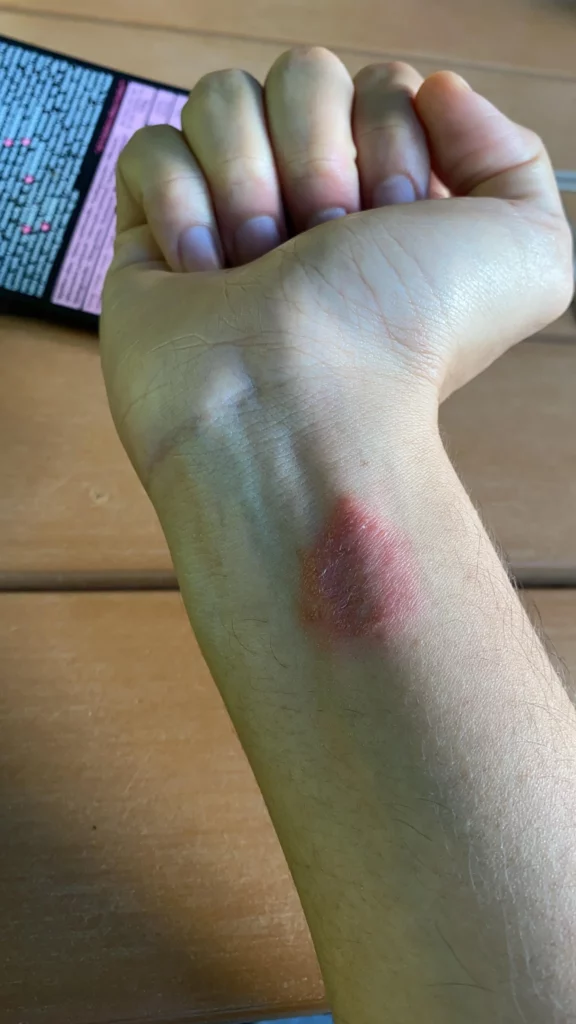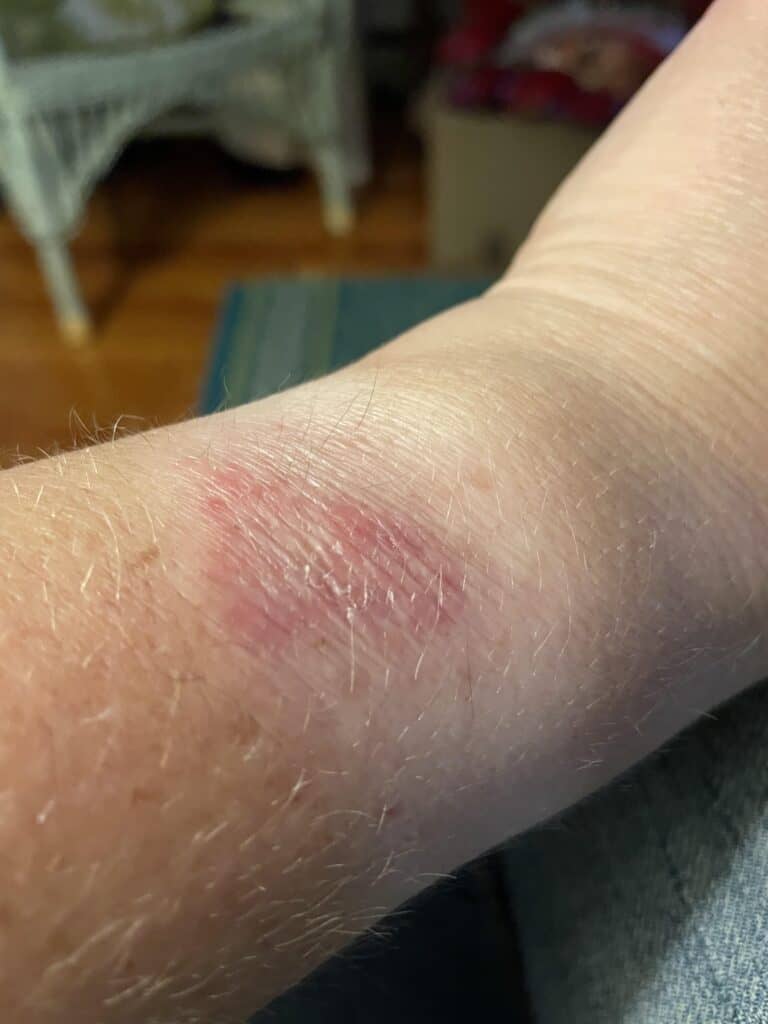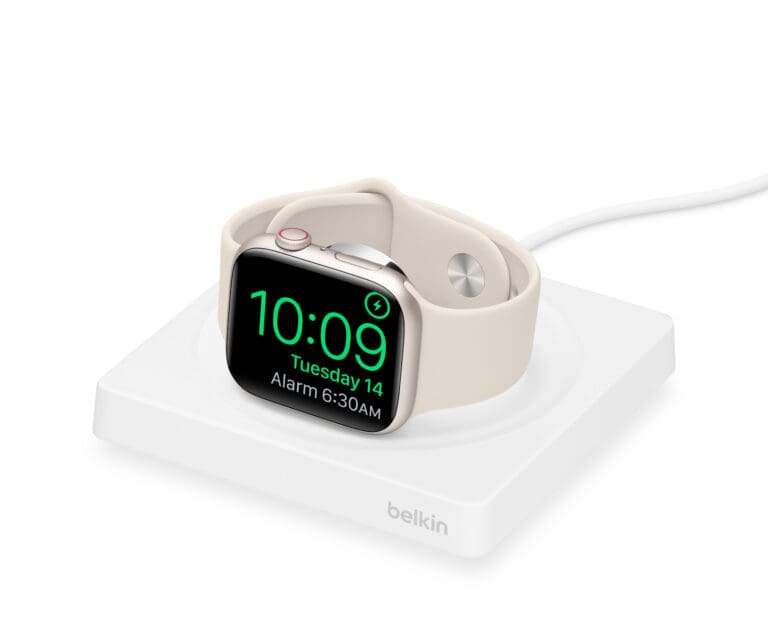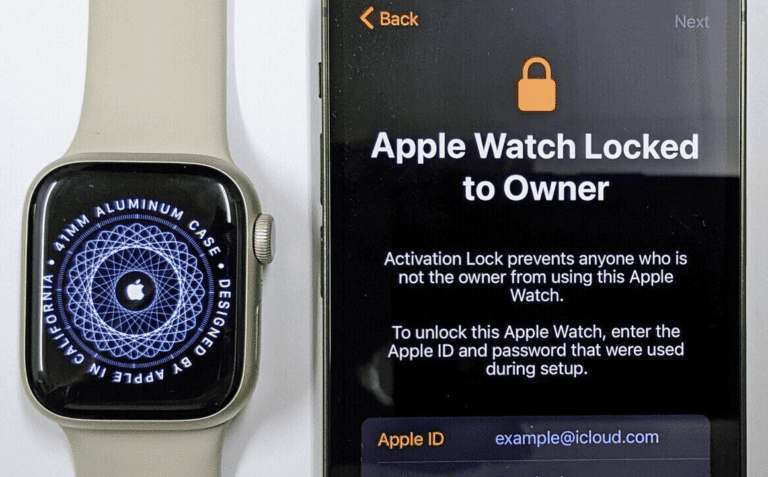The Apple Watch is popular for tracking fitness, staying in touch, and adding convenience to daily life. However, some users might experience skin irritation or allergic reactions from wearing it. If you notice redness, itching, or a rash under your watch, you’re not alone—many people face this issue.
If you develop a rash or discomfort from wearing your Apple Watch, take it seriously. Whether you wear it all the time or only occasionally, any skin reaction requires attention. It’s important to look into the problem and consider some tips and suggestions. This information is not medical advice. If the rash doesn’t go away, see a medical professional.
This guide will help you understand why these reactions happen, how to prevent them, and what to do if they occur.
Why Do Allergic Reactions Happen?
Several factors can contribute to skin irritation from an Apple Watch:
1. Material Allergies
- Nickel sensitivity: Nickel is present in stainless steel and some aluminum alloys. Even small amounts can trigger allergic contact dermatitis in sensitive individuals.
- Cobalt or acrylates: Rarely, reactions can occur to other metals or adhesives used in watch components.
- Watch bands: Leather, silicone, or synthetic bands can cause irritation if you’re allergic to dyes, rubber, or adhesives.
2. Moisture & Friction
- Sweat, soap, or lotion trapped under the watch can irritate the skin.
- Wearing the band too tightly can increase friction and reduce airflow.
3. Hygiene Issues
- Bacteria or debris buildup on the watch or band can worsen irritation.
Common Symptoms
If you’re reacting to your Apple Watch, you may notice:
- Redness or rash under the watch or band
- Itching or burning sensations
- Dry, flaky, or blistered skin
- Symptoms that worsen with prolonged wear
How to Prevent Allergic Reactions
✅ Choose the right band
- Opt for hypoallergenic materials like fluoroelastomer (Apple’s Sport Band) or fabric loops.
- Avoid nickel-containing metals if you’re sensitive.
✅ Keep it clean
- Regularly clean both the watch and band with a soft, lint-free cloth and mild soap.
- Rinse after workouts to remove sweat and salt.
✅ Adjust the fit
- Wear the watch snug but not tight—your skin should be able to breathe.
- Loosen the band during rest or at night.
✅ Rotate wrists
- Switching wrists occasionally can give your skin a break.
✅ Use a barrier
- Hypoallergenic adhesive patches or clear protective films can prevent direct skin contact.
What To Do If You Develop a Reaction
- Remove the watch immediately if you notice irritation.
- Clean the affected skin with mild soap and water.
- Apply a soothing cream (e.g., fragrance-free moisturizer, aloe vera, or over-the-counter hydrocortisone for mild inflammation).
- Avoid wearing the watch until the skin heals.
- Consult a dermatologist if symptoms persist or worsen.
When to Seek Medical Help
You should see a doctor if:
- The rash spreads beyond the watch area.
- You develop blisters, oozing, or severe swelling.
- Over-the-counter treatments don’t improve symptoms within a week.
Final Thoughts
Apple Watch allergic reactions are usually mild and manageable. Most often, they’re caused by nickel sensitivity, band materials, or sweat buildup. By choosing the right band, keeping your watch clean, and giving your skin breaks, you can enjoy the benefits of your Apple Watch without discomfort.
If irritation continues despite preventive steps, consult a dermatologist to explore allergy testing and tailored solutions.
Apple Watch Skin Rash: Tips To Handle It
Usually, a skin rash brought upon by the Apple Watch is not serious and there are simple steps you can take to find relief and prevent future flare-ups. Here’s a handy table to guide you:
| Tip | Description |
|---|---|
| Identify the Culprit: | Is it the band material, sweat buildup, or maybe an allergic reaction? Check for common irritants like nickel in metal bands or silicone in sports bands. |
| Ditch the Watch, ASAP: | Give your skin some breathing room! Take off your Apple Watch and let the affected area air out. |
| Cleanse Gently: | Wash the rash with mild soap and lukewarm water. Avoid harsh scrubs or chemicals. |
| Moisturize: | Apply a fragrance-free moisturizer to soothe the irritation and promote healing. |
| Loosen Up: | If your band feels too tight, adjust it for a looser fit that allows for better air circulation. |
| Switch Bands: | Consider trying a different band material, like hypoallergenic nylon or breathable leather, to see if it makes a difference. |
| Hygiene Matters: | Regularly clean your Apple Watch and band with a disinfectant wipe to remove sweat and bacteria. |
| Seek Medical Advice: | If the rash worsens, becomes painful, or spreads, consult a doctor or dermatologist to rule out any underlying medical conditions. |
Bonus Tip: Elevate your wrist! Wearing your Apple Watch slightly higher up on your forearm can help reduce friction and moisture buildup.

4 Main Reasons For Skin Rashes (Apple Watch)
- Trapping of Sweat: Between the band and the skin. This most commonly occurs on the sports bands or bands that are meant to be worn tight against your skin (with no breathing room). The solution is to change your band or remove it more frequently (especially after exercise) and wash it. You can change the material of the band to something that lets the moisture escape better – ie- the sports loop.
- Contact Dermatitis: Contact dermatitis is an itchy rash caused by direct contact with a substance or an allergic reaction to it. You can be allergic to many different components of the bands out there. For example, the sports band has nickel in it which many people are allergic to. Some bands may claim to be hypoallergenic, but that doesn’t necessarily mean that all users will be free from reactions to it.
- Fungal Infections: You will want to consult with a dermatologist or other doctor if you have some sort of fungal infection causing the rash. In general, they will want you to avoid using the band for several days while you’re treating the fungus to avoid making the issue worse. The basic overview is that you will need to clean the band thoroughly with an anti-fungal cleaner while treating the fungus on your wrist with a similar anti-fungal ointment for several days. Once the fungus has been cleared from your skin and the band, you should be safe to use it once again.
- Band Worn Too Tight: This is one of the most common reasons and can feed into the other causes as well. Some people over-tighten their bands to the point that it is damaging their skin. If you notice that your watch band is too tight, loosen it a few notches to see if the rash issue goes away on its own.
If you bought the band from an Apple Store feel free to go in and consult with a Genius expert to see what tips they have. Most stores will replace the band for a different one (different material) at no cost to you, so it’s worth your time to check that option out.
Personal Experiences and Reports
Across various online forums, including the Apple Support Community, users have shared their experiences with skin reactions from wearing the Apple Watch. These stories range from mild discomfort to more severe reactions. For instance, one user mentioned a red rash developing under the watch band, a common complaint among others. This isn’t just a one-off issue; it’s something several Apple Watch wearers have encountered.
Common Symptoms of Allergic Reactions
When it comes to allergic reactions caused by the Apple Watch, the symptoms are usually pretty clear:
- Redness: The skin under the watch or band turns red.
- Itching: An uncomfortable itching sensation that doesn’t go away easily.
- Blistering: In more severe cases, blisters can form.
It’s important to differentiate these symptoms from other skin issues, like irritation from sweat or pressure.

Materials in Apple Watch Causing Allergies
The Apple Watch, like many wearable devices, is made from a variety of materials. Some of these, unfortunately, can trigger allergic reactions in certain individuals. For example, nickel, found in some Apple Watch models, is a common allergen. Silicone, used in many watch bands, can also cause reactions for some people. To learn more about the materials used in Apple Watch bands, check out Apple’s Official Guidelines on Watch Bands.
Case Studies and Research
Looking into the broader picture, there’s a growing body of research and case studies focusing on allergic reactions to wearable tech. Dermatologists and researchers are paying attention to this trend, as more people come forward with their experiences. A notable point is that these reactions are not limited to just one type of material or model. It’s a diverse issue affecting a range of users. For a deeper understanding of skin reactions to technology, a visit to Understanding Skin Reactions to Technology can provide more insights.
Preventing Allergic Reactions
Prevention is always better than cure, especially when it comes to skin allergies. Here are some effective ways to prevent allergic reactions from your Apple Watch:
- Choose the Right Band: If you have sensitive skin, opt for hypoallergenic materials. Apple offers a variety of band options, so pick one that suits your skin type.
- Keep it Clean: Regularly cleaning your watch and band can prevent build-up of irritants. Use a gentle, non-abrasive cleaner.
- Give Your Skin a Break: Don’t wear your watch too tight or for too long. Let your skin breathe.
Dealing with an Allergic Reaction
If you do experience an allergic reaction, here’s what you can do:
- Remove the Watch: The first step is to take off the watch to prevent further irritation.
- Clean the Area: Gently clean the affected skin with soap and water.
- Seek Medical Advice: If the reaction is severe or doesn’t improve, consult a healthcare professional.

Apple’s Response and User Support
Apple takes these concerns seriously and offers support for users experiencing allergic reactions. They suggest:
- Contacting Apple Support: If you have a reaction, reach out to Apple. They might offer solutions or alternatives.
- Exploring Band Options: Apple provides information on the materials used in their bands and watches. This can help you choose a skin-friendly option.
FAQs
Let’s answer some common questions users have about Apple Watch and skin reactions:
- Can the Apple Watch cause skin irritation?
- Yes, in some cases, materials in the watch or band can cause irritation.
- What materials in the Apple Watch might cause allergies?
- Materials like nickel and certain types of plastics or rubbers can be allergenic.
- How can I prevent skin irritation from my Apple Watch?
- Keep the watch clean, wear it loosely, and choose hypoallergenic bands.
- Is a rash usually caused by the watch itself or the band?
- It can be either, but most times it’s caused by the band. Look at where the rash is on your skin and how it aligns with the watch – is it under the watch or somewhere under the band? You can usually narrow down the issue based on where the rash is.
Conclusion and Final Thoughts
While the Apple Watch is a fantastic piece of technology, it’s important to be aware of and manage potential skin reactions. By choosing the right materials, keeping the device clean, and being mindful of how you wear it, you can enjoy all the benefits of your Apple Watch without discomfort. Remember, if you experience any severe reactions, it’s always best to consult a healthcare professional. Stay informed, stay safe, and keep enjoying your tech in comfort!







